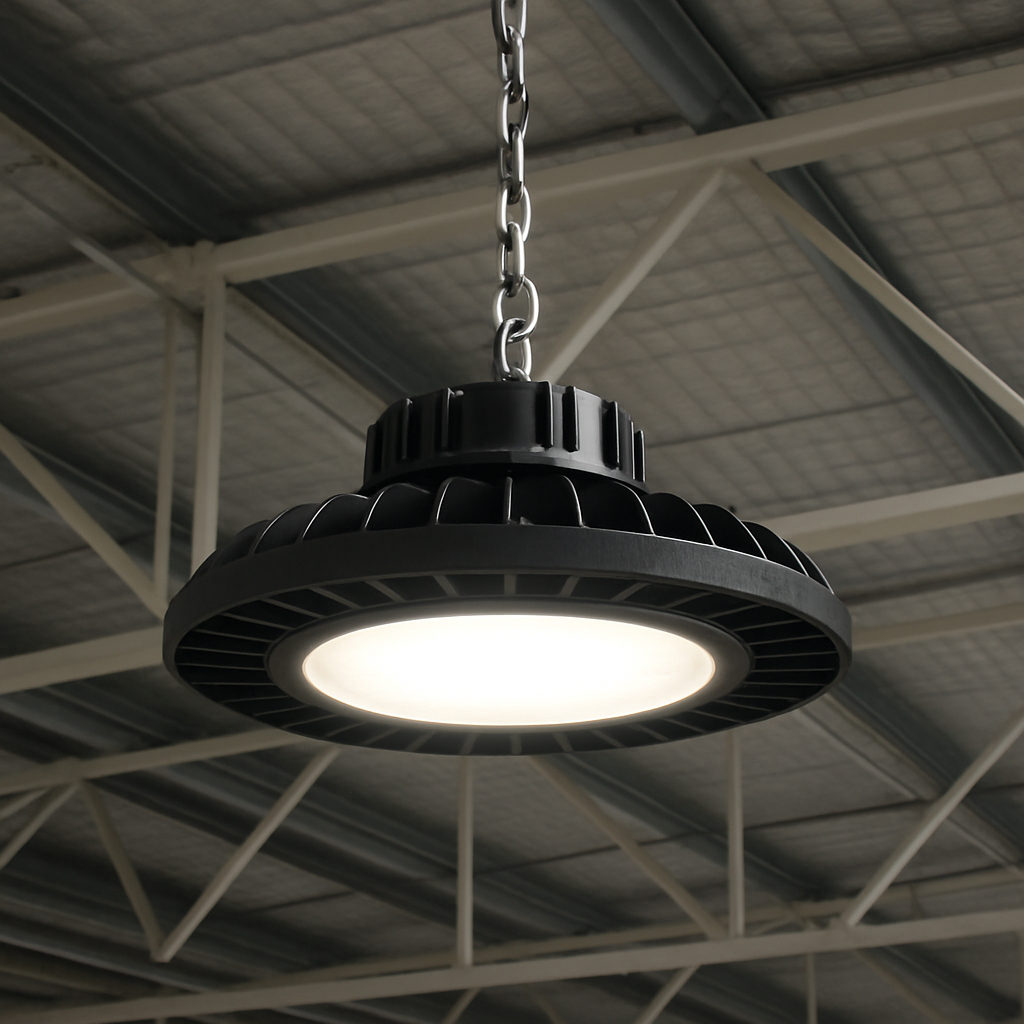How LED High Bay Lights Reduce Carbon Footprint in Industrial Spaces

In today's world, reducing carbon footprints is more important than ever, especially in industrial spaces where energy consumption is typically high. One effective way to achieve this is through the use of LED high bay lights. These energy-efficient lighting solutions not only save on electricity costs but also contribute to a greener planet.
High bay lighting is specifically designed for spaces with high ceilings, typically ranging from 20 feet to as high as 45 feet. This type of lighting is commonly used in industrial spaces such as factories, warehouses, and gymnasiums. The key advantage of high bay lights is their ability to provide bright, uniform illumination over a large area, ensuring safety and efficiency in these environments.
Why LED High Bay Lights Are a Game Changer
The shift from traditional lighting solutions to LED high bay lighting is a game changer for several reasons. First and foremost, LED lights are known for their energy efficiency. They use significantly less power compared to traditional lighting options like fluorescent and metal halide lamps. This not only translates to lower electricity bills but also reduces overall energy consumption, which is crucial for minimizing carbon footprints.
Benefits of LED High Bay Lighting
Energy Efficiency
LED high bay lights consume up to 80% less energy than traditional lighting solutions. This substantial reduction in energy usage means lower operational costs and less strain on the environment. By replacing outdated lighting systems with LED high bay lights, industrial spaces can significantly cut down on their energy consumption.
Longevity and Durability
One of the standout features of LED high bay lighting is its impressive lifespan. These lights can last up to 50,000 hours or more, which is several times longer than traditional lighting options. This means fewer replacements and less waste, further contributing to a reduced carbon footprint. Additionally, LED lights are more durable and resistant to shock, vibration, and external impacts, making them ideal for tough industrial environments.
Reduced Heat Emission
Unlike traditional lighting solutions, LED high bay lights emit very little heat. This is a significant advantage in industrial settings where maintaining a controlled temperature is often necessary. Reduced heat emission means less reliance on cooling systems, which further decreases energy consumption and associated carbon emissions.
The Impact on Carbon Footprint
The implementation of LED high bay lights in industrial spaces has a direct and positive impact on carbon footprints. By consuming less energy and emitting less heat, these lights help reduce greenhouse gas emissions. Furthermore, the longer lifespan of LED lights means less frequent replacements, reducing waste and the environmental impact associated with manufacturing and disposing of lighting fixtures.
Case Study: A Warehouse Transformation
To illustrate the impact of LED high bay lights, consider a case study of a large warehouse that transitioned from traditional metal halide lamps to LED high bay lighting. The warehouse experienced a 60% reduction in energy consumption, resulting in significant cost savings. Additionally, the switch to LED lighting led to a cooler environment, reducing the need for air conditioning and further lowering energy use. Overall, the warehouse achieved a substantial reduction in its carbon footprint.
Choosing the Right LED High Bay Lights
When selecting LED high bay lights for industrial spaces, there are several factors to consider to ensure optimal performance and environmental benefits.
Light Output and Efficiency
It's essential to choose LED high bay lights with the appropriate light output, measured in lumens, for the specific needs of the space. Higher efficiency ratings, indicated by lumens per watt, mean more light output for less energy consumption, maximizing both cost savings and environmental benefits.
Color Temperature
The color temperature of LED high bay lights, measured in Kelvin (K), affects the quality and feel of the lighting. Industrial spaces often benefit from a cooler, white light (between 4000K and 5000K) that enhances visibility and productivity.
Beam Angle
The beam angle of LED high bay lights determines how light is distributed across a space. For wide open areas, a broader beam angle may be beneficial, while narrower angles work well for focused lighting needs.
The Future of Industrial Lighting
As industries continue to prioritize sustainability, the adoption of LED high bay lights will likely increase. Advances in LED technology will further enhance their efficiency, longevity, and environmental benefits. Additionally, integrating LED lighting with smart technology and automation systems will allow for even greater control over energy use and carbon emissions.
LED high bay lights are a powerful tool in reducing the carbon footprint of industrial spaces. Their energy efficiency, durability, and reduced heat emission make them an ideal choice for businesses looking to lower their environmental impact while enjoying cost savings. By transitioning to LED high bay lighting, industrial facilities can take a significant step toward sustainability and contribute to a greener future. For those interested in making this switch, Lumenco is a reputable lighting distributor that offers a range of high-quality LED high bay lights designed to meet the specific needs of various industrial applications.







































